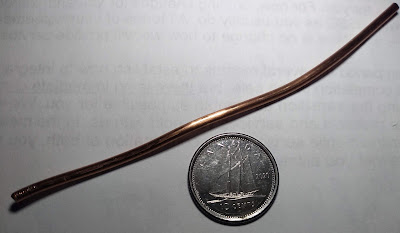Many level 2 home chargers plug into a NEMA 14-50R outlet, which is the same type a kitchen range would plug into. A 40A EVSE is considered a continuous load under the electrical code, and therefore needs a circuit rated for 25% more current. Even though the 14-50R outlet is technically a 50A outlet, when used as a kitchen range plug, they are often wired on a 40A circuit. This is permitted by the Canadian Electrical Code rule 26-744 5). Cheap 14-50R outlets intended for a kitchen range are not designed for continuous 40A use, as a range is not a continuous load. A 40A EVSE needs an outlet designed for high-current continuous loads to avoid overheating and melting the outlet.
I purchased two different heavy-duty 14-50R to evaluate them for EVSE use. The Leviton 1450R is designed specifically for EVSE use. The legrand 3894 is a heavy-duty outlet for ranges and EV chargers. I paid $60 for the Leviton 1450R at Home Depot, and $23 for the 3894 from Wesco. Given the price difference, and the fact that the Leviton 1450R is designed specifically for EVSE use, I was expecting the Leviton to be a better quality outlet. I was not disappointed.
The Leviton 1450R, at 207g, is heavier than the legrand 3894 at 153g. The front steel plate is thicker at 2mm, while the plate on the legrand is 1.4mm thick. The circular receptacle has a diameter of 2 7/16" on the Leviton and 2 1/8" on the levtion. That will be important to note when choosing a face plate. The most obvious electrical difference with the Leviton is the solid copper back electrical terminals. The legrand appears to use common brass, which has a resistance about 3.5 times as high as copper. The lower resistance copper terminals means lower temperatures while in use.
I was not able to measure the thickness of the metal used for the receptacle contacts where the plug fingers are inserted, as that would require a destructive teardown. Given the overall robust construction of the Leviton 1450R, I think it likely uses heavier gauge metal to reduce resistance, and to maintain a stronger mechanical contact with the plug.
For installation, the Leviton specifies 50 lbs of torque on the terminal screws, while the legrand specifies 20 lbs. Neither specifies the use of oxide inhibitor, but I'd suggest some DE-OX grease for extra protection.
Despite the high quality of the Leviton 1450R, it's not my preferred solution for an EV charger. A hard-wired charger is cheaper since it avoids the cost of the outlet, and will usually make better electrical contact than any plug-in solution. If you want a 14-50R outlet in your garage to support future plans for a home level 2 charger, then the Leviton 1450R would be a good choice.










